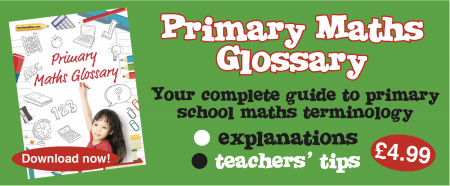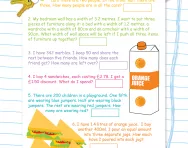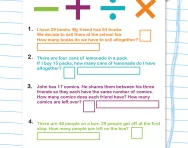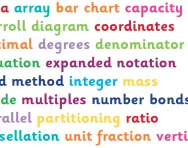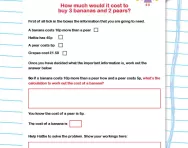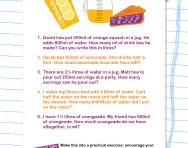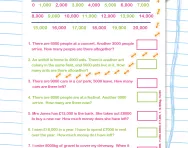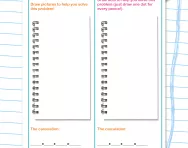Important update from TheSchoolRun
For the past 13 years, TheSchoolRun has been run by a small team of mums working from home, dedicated to providing quality educational resources to primary school parents. Unfortunately, rising supplier costs and falling revenue have made it impossible for us to continue operating, and we’ve had to make the difficult decision to close. The good news: We’ve arranged for another educational provider to take over many of our resources. These will be hosted on a new portal, where the content will be updated and expanded to support your child’s learning.
What this means for subscribers:
- Your subscription is still active, and for now, you can keep using the website as normal — just log in with your usual details to access all our articles and resources*.
- In a few months, all resources will move to the new portal. You’ll continue to have access there until your subscription ends. We’ll send you full details nearer the time.
- As a thank you for your support, we’ll also be sending you 16 primary school eBooks (worth £108.84) to download and keep.
A few changes to be aware of:
- The Learning Journey weekly email has ended, but your child’s plan will still be updated on your dashboard each Monday. Just log in to see the recommended worksheets.
- The 11+ weekly emails have now ended. We sent you all the remaining emails in the series at the end of March — please check your inbox (and spam folder) if you haven’t seen them. You can also follow the full programme here: 11+ Learning Journey.
If you have any questions, please contact us at enquiries@theschoolrun.com. Thank you for being part of our journey it’s been a privilege to support your family’s learning.
*If you need to reset your password, it will still work as usual. Please check your spam folder if the reset email doesn’t appear in your inbox.
What are two-step and multi-step problems?
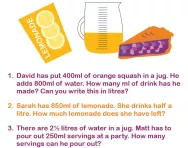
What are two-step and multi-step problems?
A word problem is a few sentences describing a 'real-life' scenario where a problem needs to be solved by way of a mathematical calculation.
Word or story problems are seen as a crucial part of learning in the primary curriculum, because they require children to apply their knowledge of various different concepts to 'real-life' scenarios. This is why teachers try to include word problems in their maths lessons as often as possible.
Word problems also help children to familiarise themselves with mathematical language and terms such as: fewer, altogether, difference, more, share, multiply, subtract, equal, reduced, etc.
Word problems: two-step problems in KS2
A two-step problem is a word problem that requires two operations to solve it, for example:
I buy a magazine costing 83p and a pencil costing 45p. I pay with a voucher that gives me 20p off the things I am buying. How much do I spend?
- In this case, the first operation would be addition (83p + 45p = £1.28).
- The second operation is subtraction (£1.28 - 20p = £1.08).
Children first start to tackle two-step problems in Year 3.
In Year 4, children will continue to come across two-step problems, for example:
I buy 30 plums. I give 1/5 of these to my friend. She eats 3 of the plums I have given her. How many plums does she have left?
- So the first operation is division (30 ÷ 5 = 6)...
- ...and the second operation is subtraction (6 - 3 = 3).
A two-step problem that might be given in Year 4 is:
I buy 4 sandwiches at £3.26 each. I am then given a £2.50 discount because I have a voucher. How much do I spend altogether?
- Here, the first operation is to multiply £3.26 by 4 (3.26 x 4 = 13.04). They could do this using the grid method or by short multiplication.
- The second operation is then to subtract £2.50 from this amount using column subtraction (13.04 - 2.50 = 10.54).
In Year 5, children start to carry out two-step problems involving decimals, percentages and fractions. They may come across problems similar to the following:
Karen has a jug with 0.8 litres of juice in it. She pours equal amounts into 4 different cups. One her friends drinks the juice in one of the cups. How much juice is left?
- Here, they could convert the 0.8 litres to 800ml...
- ...then divide it by 4 to make 200ml.
- They could then work out 800ml minus 200ml, which equals 600ml or 0.6 litres.
- If a child was confident in working with decimals, they might work out 0.8 ÷ 4 = 0.2, then 0.8 - 0.2 = 0.6.
Word problems: multi-step problems in KS2
In Year 6, children have to solve multi-step problems, which means a problem that has more than two steps.
They might be given the following problem:
| Becky says: I bought 20 apples. They were 45p each, but the shopkeeper let me have £1.50 off because I was buying so many. | Keiran says: I bought 20 apples. They were 50p each, but the shopkeeper gave me a 10% discount because I was buying so many. |
Who gets the best deal?
- Here a child would need to work out 20 x 45p, which equals £9...
- ...then subtract £1.50 from this, which equals £7.50.
- They would then need to work out 20 x 50p, which equals £10...
- ...and then work out that 10% of £10 is £1...
- ... and finally take this away from £10, which equals £9.
Therefore Becky gets the better deal!
